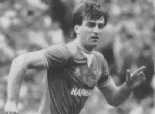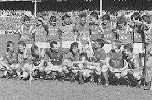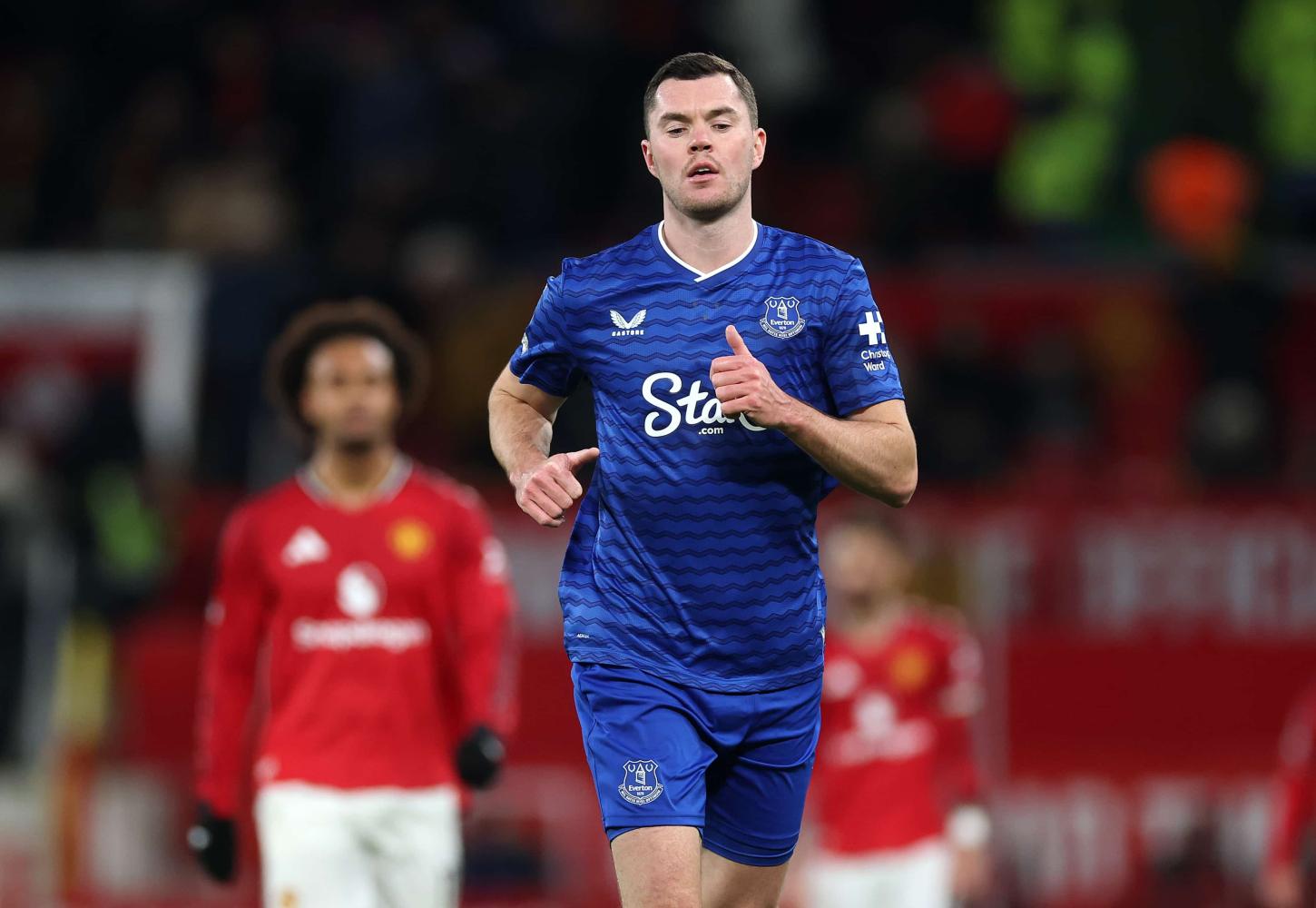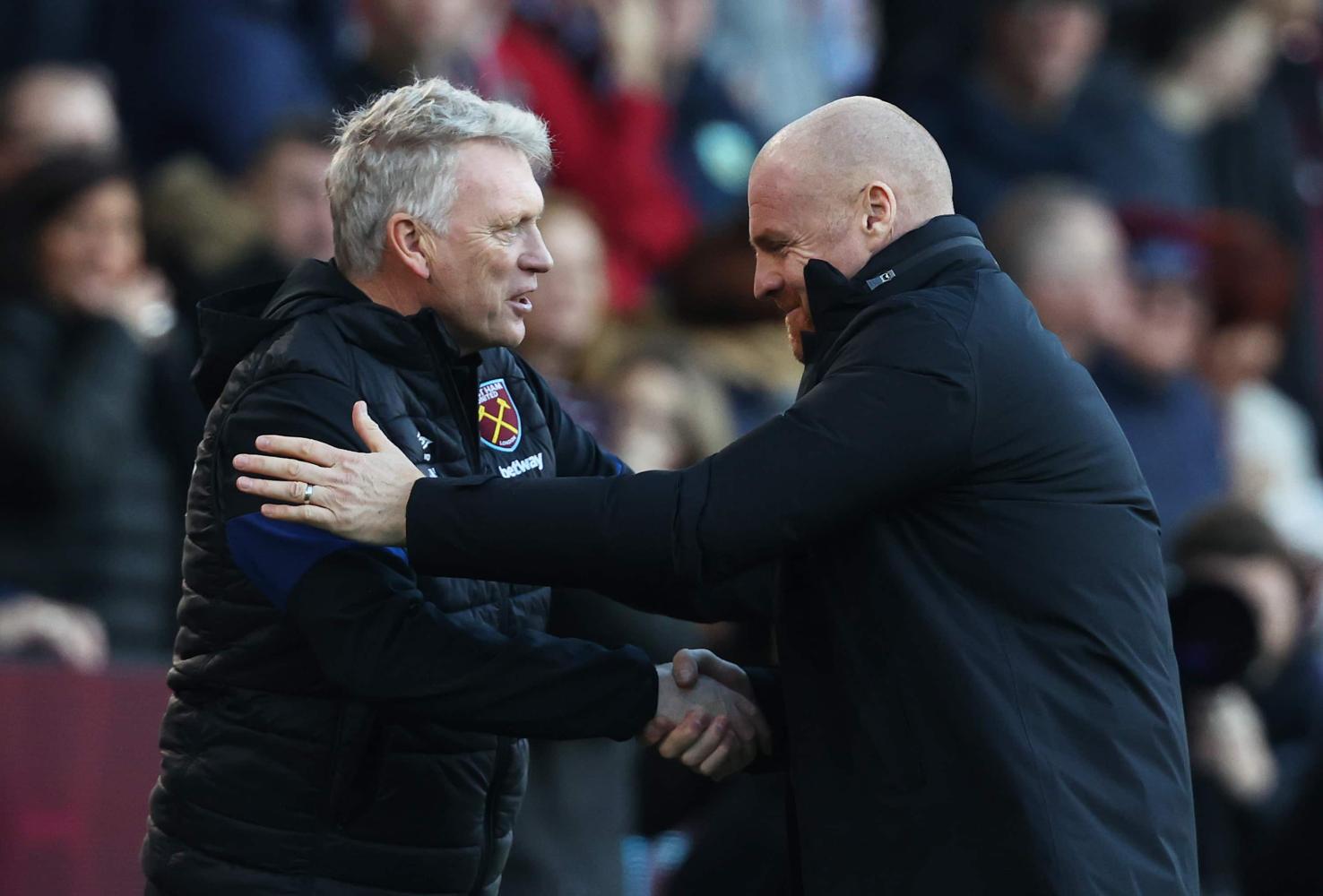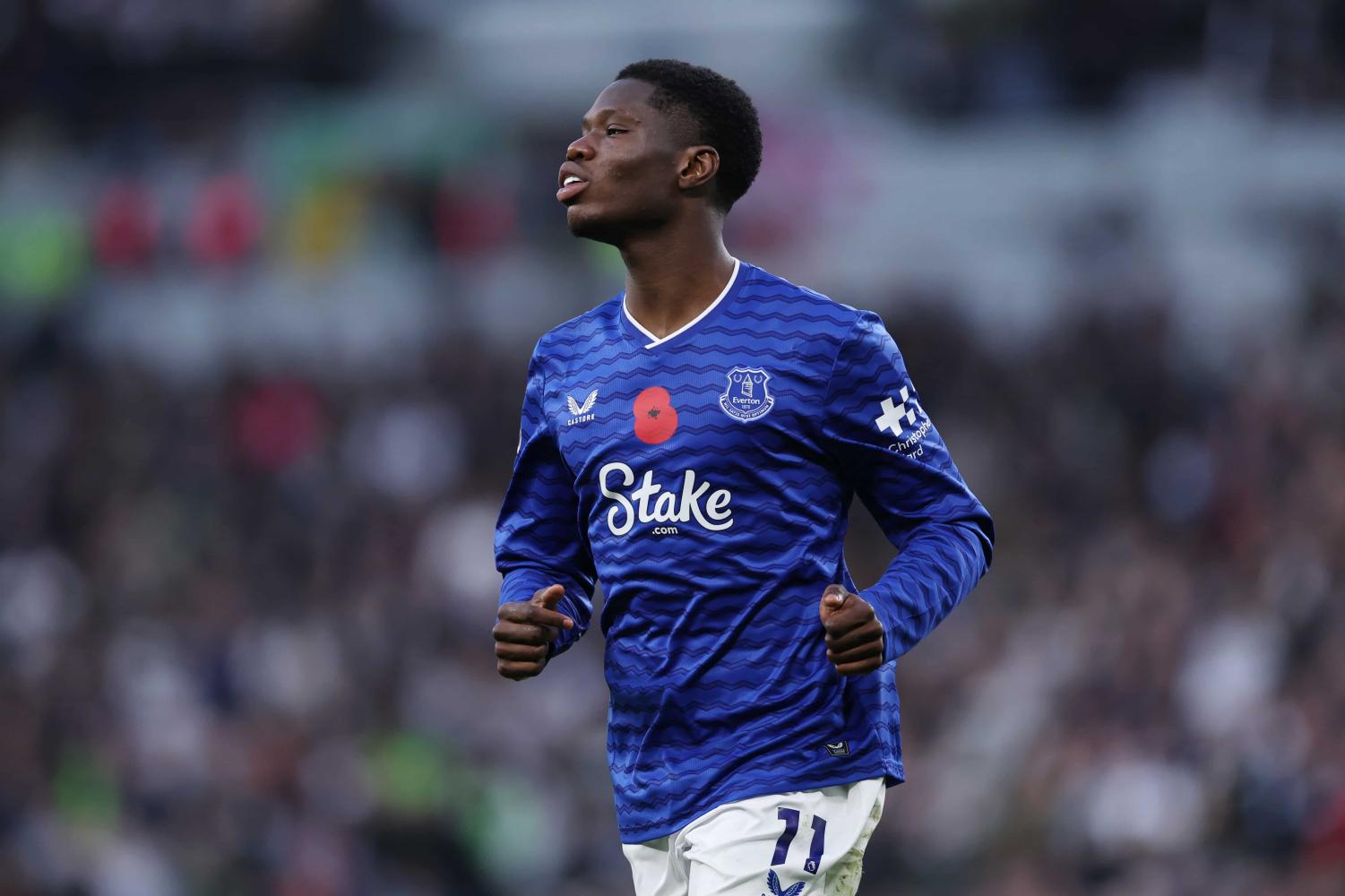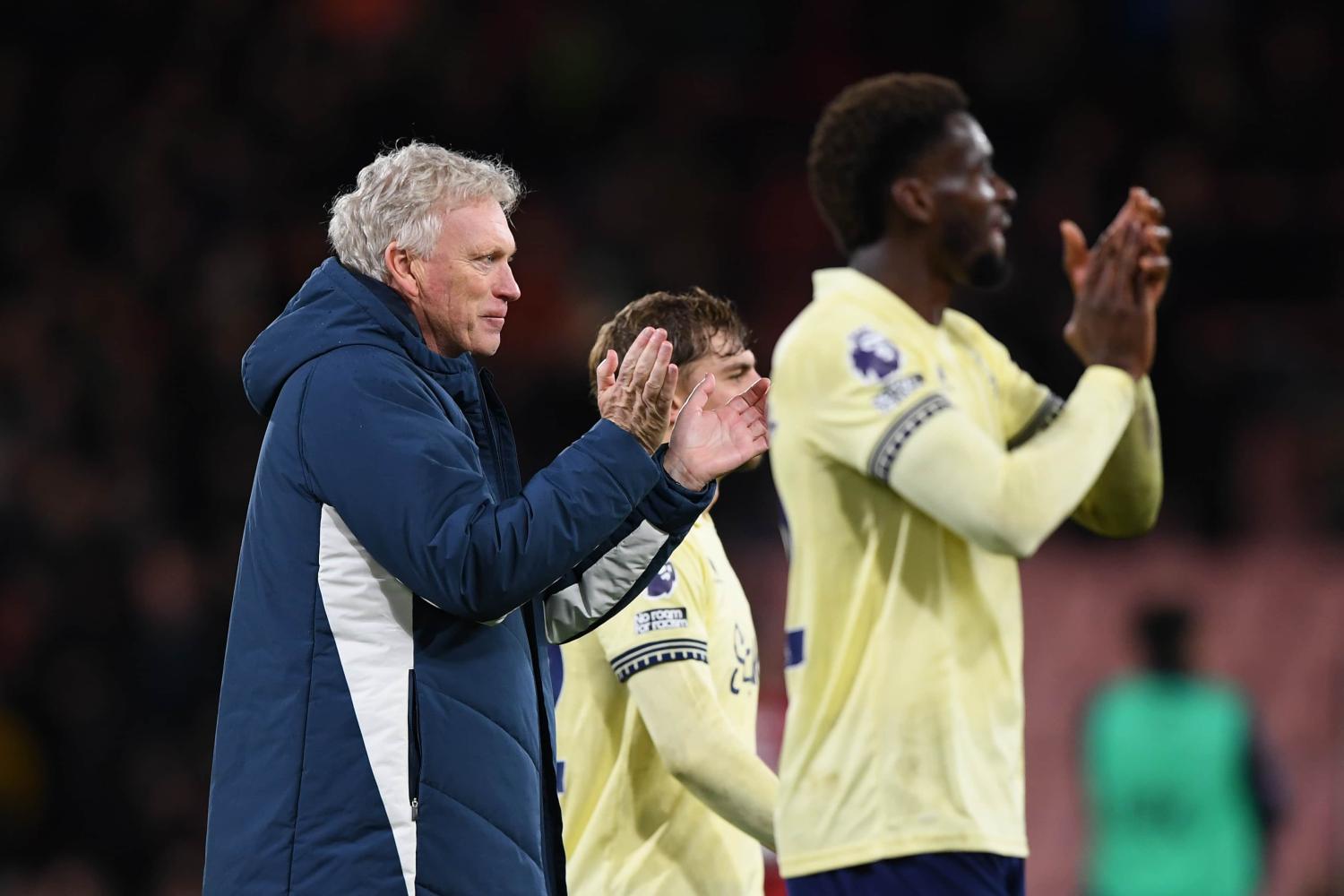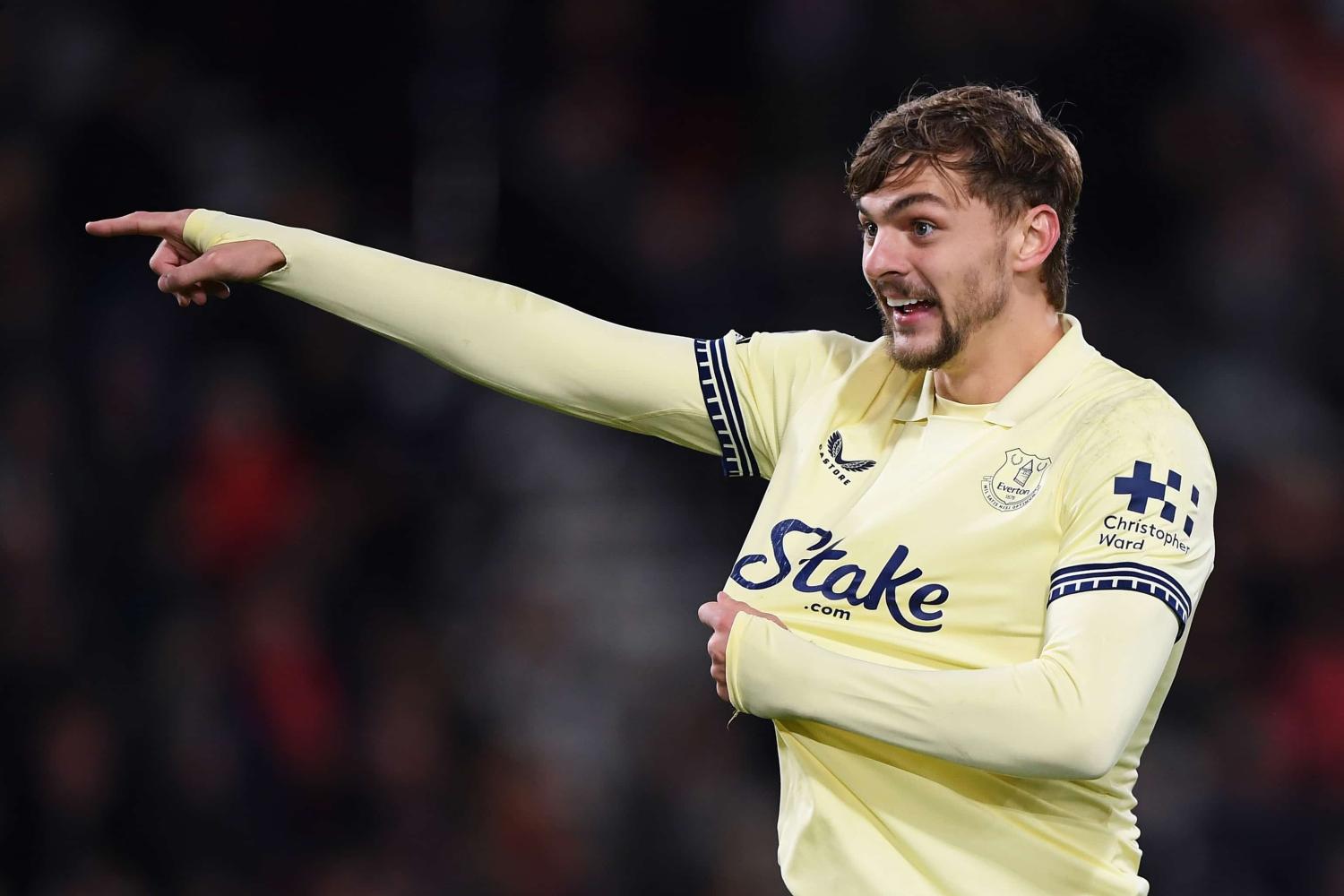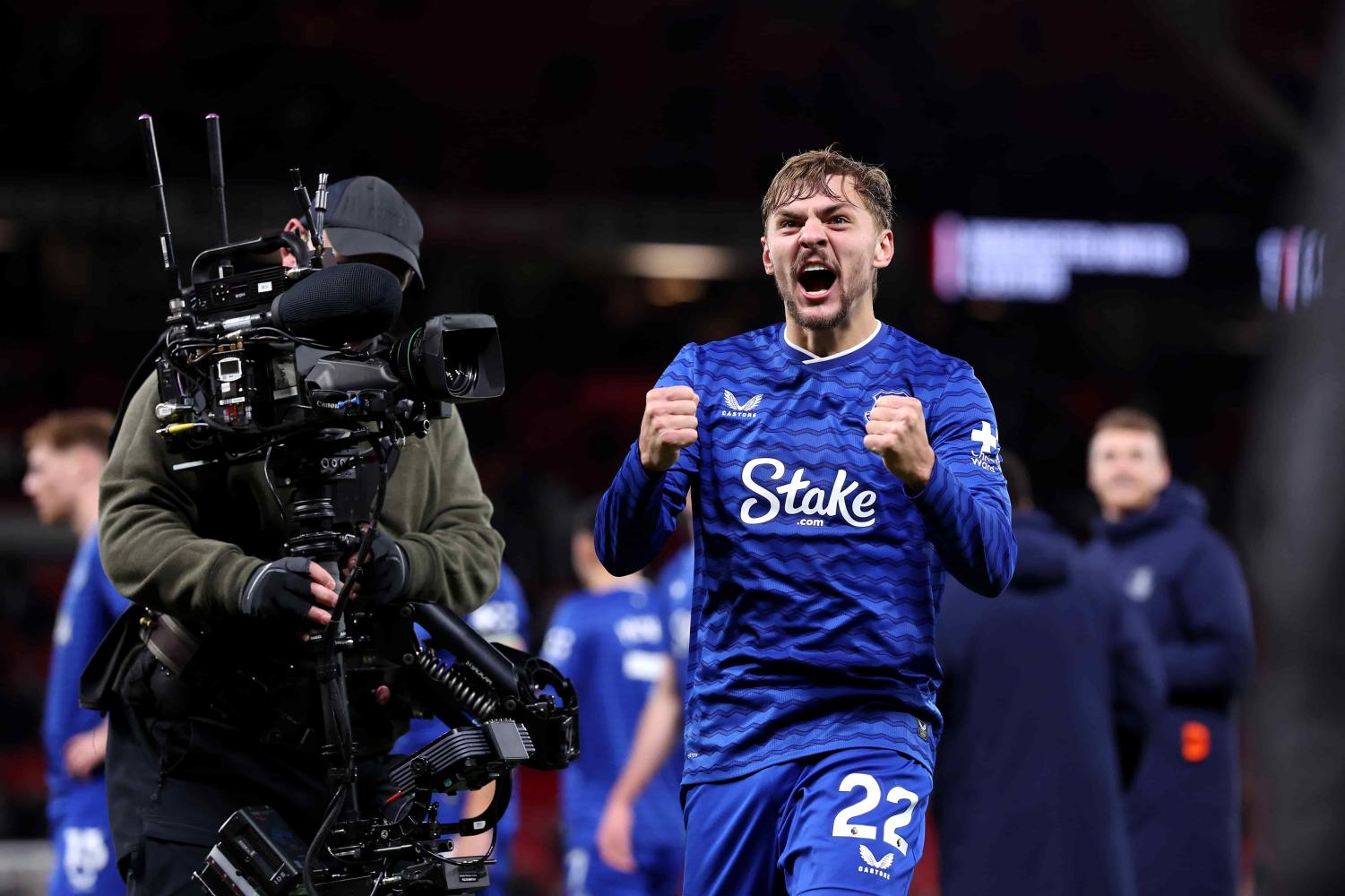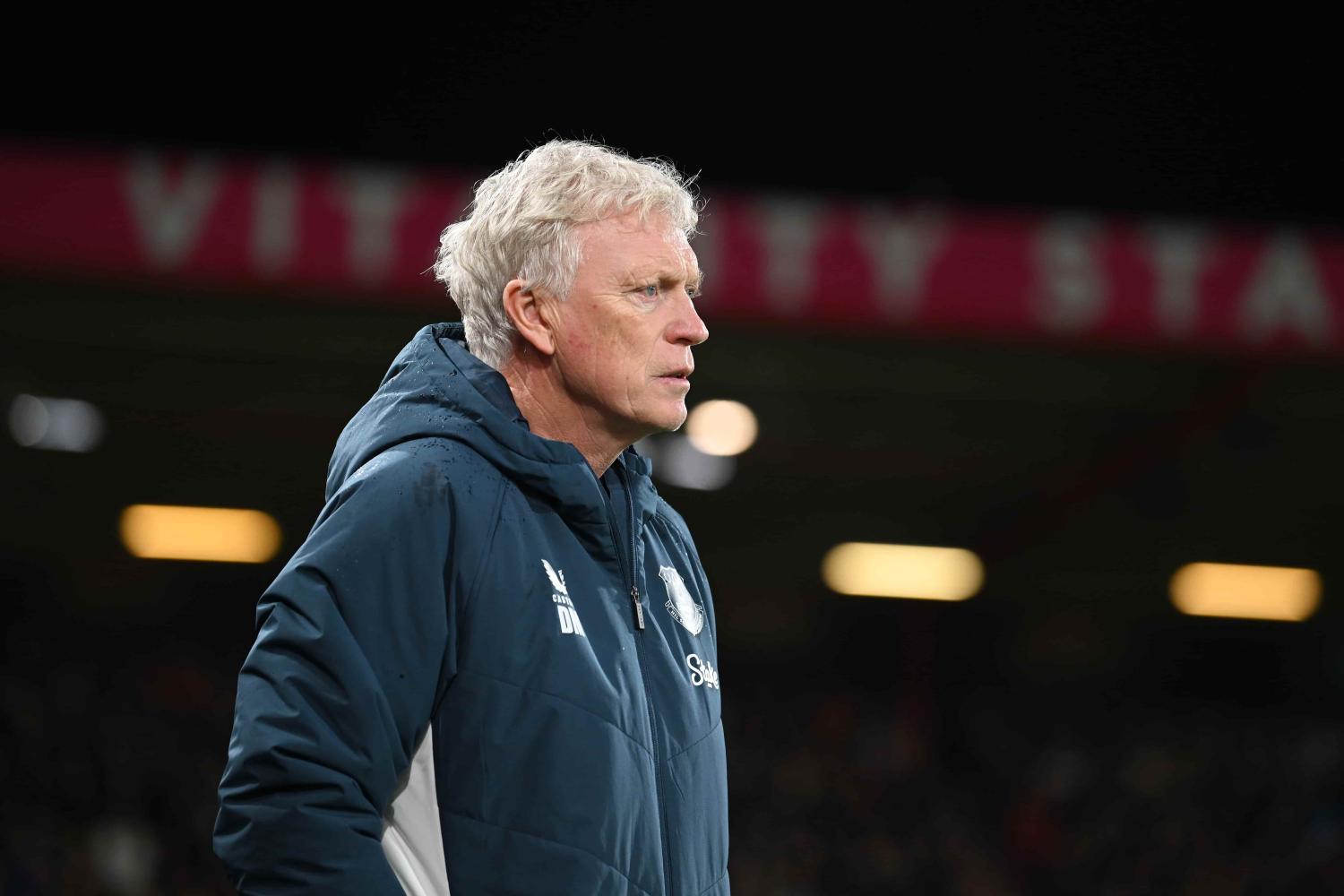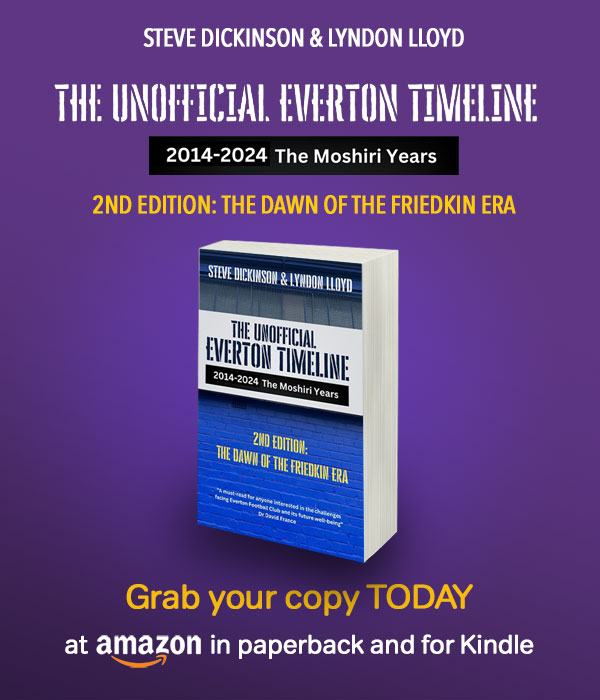VII: HOWARD'S FIRST TIME (1981-87) |
THE THIRD GOLDEN PERIOD
Everton's next rescuer was appointed after a short while � another ex-Evertonian: Howard Kendall. The first few seasons under Kendall weren't that promising and at the end of 1983 Kendall's was very close to being sacked. Some of the fans demanded his sacking after some poor performances, but club chairman Philip Carter backed Kendall. Then, like a gift from the heaven, during a League Cup fifth round match against Oxford while being 0-1 down, Everton got a lucky equaliser scored by Adrian Heath. The bad back-pass from an Oxford defender that led to the goal is probably the single most important pass in Everton's history. This match has generally been thought of as the turning point, and the replay was won 4-1. The FA Cup went well and Everton didn't suffer a defeat in the League for two months. Everton met Liverpool in the League Cup final, which was the first all-Merseyside final. In the 0-0 draw at Wembley, Alan Hansen cleared an Adrian Heath attempt off the line with his hand without any consequences, and Pool luckily won the replay at Maine Road 1-0.
This disappointment was quickly forgotten as Everton won their first trophy in fourteen years, beating Watford 2-0 in the FA Cup final with goals from Graeme Sharp and Andy Gray. Sharp scored with a shot that hit the post before going in and Gray headed in a fantastic cross from Steven, a rising star. There was some controversy about this goal, as the ball seemed to be under goalkeeper Steve Sherwood's control. Watford had managed to create several dangerous chances early in the match, but Everton took control in the second half. When captain Kevin Ratcliffe lifted the Cup after the match, a big burden created by the constant success of Liverpool was also lifted. The path was clear for new Everton victories. THE GREAT SEASON OF 1984-85Everton won the Charity Shield at the start of the season through an own goal by Bruce Grobbelaar. High hopes somewhat diminished when the first two matches were lost with a goal total of 2-6, but after that Everton got a hang of it. Watford were beaten away with an amazing 5-4 scoreline. This win was to be followed by two glorious victories, proving that Everton were back at the very top: first, Liverpool were beaten at Anfield for the first time since 1970, with a fantastic long range volley from Graeme Sharp. A few weeks later the highly praised Manchester United were crushed 5-0 at Goodison after a marvellous Everton performance. Following these fine victories, Everton played gloriously, especially after Boxing Day; Everton didn't loose a match until they had secured their eighth League championship in May 1985 (18 matches, 16 victories, 2 draws, and the last ten were victories!). The last test was at the end of April, when Everton met their worst rival, Tottenham, at White Hart Lane, but this match was also won 2-1 with goals from Andy Gray and Trevor Steven and some super saves from Neville Southall. Everton won the title, as in season 1969-70, by beating every opponent at least once. No one else has been able to do this during this period, or after 85. THE GLORIOUS CHAMPIONSHIP TEAM
Everton won the championship with an excellent team performance, and a team that was unchanged week in, week out. Even though it didn't have many superstars, it had no weak spots either. In goal they had the best keeper since Ted Sagar and Gordon West: Welsh international Neville Southall, who had risen to the very top of British and even world football. As proof, the sports writers' association awarded him the Player of the Year award, the first Everton player ever. The fullbacks were Gary Stevens, a home-grown talent soon to be promoted to the English squad, who made quick runs upfield, and Pat Van Den Hauwe, who came from Birmingham early in the season and was known for his fierce tackles and ruthless play. Central defenders were Everton and Welsh captain Kevin Ratcliffe, one of the quickest players in the League, and the young Derek Mountfield, who scored a lot of goals (10 in the League, no penalties).
Still, midfield was the area that brought Everton the title. Peter Reid, Paul Bracewell, Trevor Steven, and Kevin Sheedy could well be compared to the 1969-70 midfield of Kendall-Ball-Harvey in skill and commitment. The first three of those players were selected for the English squad and Sheedy was to play in the Irish squad for years. Reid had the same leadership qualities and never-say-die attitude as Alan Ball, and the opposition certainly felt that on the field; Reid also had a very good workrate, he was always ready to receive the ball. Reid was awarded the Players' Association's Player of the Year award � also the first time for an Evertonian. Bracewell was also a midfield fighter in some respects, but he had good vision, making excellent passes. Steven on the right and Sheedy on the left were the skillful players, though. Steven was able to take the ball to the opposition's box with his superb technique and dribbling skill, and he also scored often (12 League goals). Sheedy was able to dribble in small spaces and he had the best left foot in the League, giving excellent crosses and scoring many goals from freekicks (11 goals in the League). THE SUPERMAN FROM THE RESERVESIn front of these players was Graeme Sharp, who combined new and old in his playing position. He was a tall player with good heading abilities, so he was able to play as a target man, but he was also good in the ground, so he was able to create chances. Although his scoring rate dropped in the later years, he was a consistent scorer during these times, with 21 League goals. During the early parts of the season, the other striker was Adrian Heath, the pocket-sized player. He was the ideal partner for Sharp. He was scoring at a regular pace: 11 League goals before December, when, just on the verge of an English call-up, he injured his knee badly in a match against Sheffield Wednesday.
But there was no need to worry: up came the veteran (at the age of 29) striker Andy Gray, who substituted Heath in a fantastic way, even though he was a traditional centre forward. Gray's courage, commitment and never-say-die attitude were already legendary and made him a cult hero at Goodison. Because Sharp, Steven, Sheedy, Mountfield and even Stevens scored at a regular pace (Everton scored 88 goals in the League!) Gray didn't feel any pressure. Still he scored 9 goals in the League and some of the goals are unique, like two headers against Sunderland at Goodison and two classic goals against Leicester at Filbert Street. The 1984-85 team wouldn't have been able to achieve all this just by themselves. Solid substitutes, like the Kevin Richardson and the utility player Alan Harper, were there as backups when injuries came and gave also some tactical options to Kendall. THE FIRST EUROPEAN SUCCESSWe wouldn't be able to define season 1984-85 greatest ever just for winning the Championship title. This was also the season for the first Euoropean success. The European campaign didn't start well, beating University College Dublin only 1-0 on aggregate. But it improved after this, with Inter Bratislava from Czechoslovakia beaten 4-0 on aggregate, and Fortuna Sittard from Netherlands 5-0. Worried about the crowd problem caused by some English fans abroad, the club didn't sell any tickets to it's fans, which agitated many. This was an unnecessary precaution, as the fans behaved impeccably at the subsequent European matches. The semi-final was a real test, as the opposition was one of the top teams in Europe, Bayern Munchen, with Lothar Mattheus one of their brightest stars. In the first semi-final at the fully packed (78,000) Olympic Stadium in Munich, Everton wer able to hold on to a 0-0 draw, with Kevin Richardson saving on the line, so things looked good for the second leg. Black clouds filled the sky, though, as the Germans were one ahead at half-time with a goal from Dieter Höness. But it was Everton who would win this game with sheer determination and will. The Toffees started the second period very well; first Sharp equalised and then Gray took them in front. After Bayern had to go for forward in search of a goal, the Everton players were given space and Steven scored a fantastic goal on an excellent pass from Gray, making it 3-1. There were about 48,000 spectators at Goodison with some 200 Bayern supporters. This was one of the finest evenings in Goodison's history and will be remembered as the time when even the boardroom sang and cheered. Everton were favourites in the final against Rapid Wien and they dominated the game from the start. Near the end of the first half, Sheedy placed a freekick onto Mountfield's head and his layoff was hammered into the net by Gray. The goal was disallowed, though, as an offside. This was a wrong call, which was easy to see from the replay.
THE DISAPPOINTMENT OF THE FA CUPEverton were after a unique triple that season, but the last part was not to be won at the FA Cup final. On the road to Wembley, Everton beat Leeds, Doncaster, Telford, Ipswich, and Luton in the semi-final. Luton were one up at halftime, but Everton managed to come back. Sheedy scored from a freekick in the last minute and, in extra-time, he lifted another freekick to Mountfield who headed Everton into the final. The final against Manchester United was played just three days after the ECWC final and the hard fixture list had obviously had an effect on the Toffees. As proof, the sending off of Kevin Moran in the second half didn't help Everton, � on the contrary, United got a boost. After a goalless 90 minutes, United scored in extra-time from a counterattack when a Norman Whiteside shot from a narrow angle went in. This defeat wasn't one to moan about for a long time, though, as the season on the whole had been a tremendous success for Everton. Everton were admired everywhere. Peter Reid was the Player Association's Player of the Year, Neville Southall was Football Writers' Association's Player of the Year and Howard Kendall was, of course, the Manager of the Year. Everton won World Soccer's vote for the team of the year in Europe easily, ahead of FC Barcelona. THE DOUBLE THAT WENT TO THE WRONG ADDRESS
Andy Gray once said that you have to improve the team when it's at it's best. This happened, and ironically it was him who had to step down in favour of Gary Lineker in the summer of 1985. Lineker cost Everton �850,000, a sum that Lineker paid back in full. Paul Wilkinson was another striker fighting for a place. The main reason for buying him was, that he had sensationally scored the winner at Goodison when Grimsby won in the League Cup. It was obvious that Kendall wanted to keep Everton at the top in other tournaments since they had been denied a place in Europe. The season started well enough with a 2-0 victory over Manchester United in the Charity Shield, after a fine Everton performance. The League didn't start that well, though. Although Arsenal were beaten 5-1 at home, Everton didn't do that well until the turn of the year. When Everton beat Liverpool at the end of February at Anfield 2-0, with a weak long-range shot from Ratcliffe and a Lineker tap-in, it looked as if Everton were going to take the title second year running. Even the absence of super-keeper Southall (he was injured at the end of March) didn't stop Everton, as the reserve keeper Bobby Mimms played well. But as has been pointed out in several places, Liverpool had a super-human run during the spring that took them past us. An away defeat at Oxford on the last day of April was the crucial game, and even a 6-1 victory at home against Southampton in the next match didn't help. Ironically it was the Manor Ground where Everton started their glorious run two and a half years earlier. Now the same field cost Everton the title and a dream of the double. Everton had reached the FA Cup final for a third time in a row. Sheffield Wednesday wer confronted in the semi-final at Villa Park without an injured Gary Lineker. Super-sub Alan Harper put the Toffees in front, but after the Owls had equalised and Sharp missed a million-pound chance, it was extra-time. This time Sharp didn't miss and his sensational first-time volley straight from a pass by Paul Bracewell made it 2-1, and set up a meeting with Liverpool at Wembley. The final was a huge thing for the entire city of Liverpool. Just like the League Cup final in 1984, the Blue and Red fans travelled to London and filled Wembley in a spirit of friendship, even though the fight for best team in the town was at it's highest. Everton dominated the first half and went deservedly one up, when Lineker scored with his second attempt after he was put through by a fine pass from Peter Reid. Previously, at 0-0, referee Alan Robinson was the decider of the match, when he didn't award the clearest penalty in the world after Steve Nicol had felled Graeme Sharp from the behind. Just like in the previous League Cup final meeting, where Alan Hansen's handball failed to win a penalty, Liverpool had a 12th man on the field. Was it a coincidence that it was the same man, Alan Robinson, on both occasions?? FROM A BITTER DEFEAT TO NEW VICTORIESThe lead at half-time was well deserved. In the second half, Everton even stepped up a few gears and a right foot shot from Kevin Sheedy almost increased the lead, but then Liverpool took control. Gary Stevens has usually been blamed for the equaliser, because his pass went straight to the opposition, and from this situation Ian Rush was able to score. Bruce Grobbelaar had to make a spectacular save from a Graeme Sharp header before Craig Johnston put the Pool in front after a fine combination. Ian Rush then scored again to finish it off. The defeat was very bitter to the Toffees for several reasons. Firstly, the referee had a large influence in it and secondly, the double that was coming to Everton went to this other place. The season was still a fantastic triumph for Gary Lineker, who scored 30 League goals and a total of 40 goals in all. Graeme Sharp also managed a respectable 19 goals. Everton were able to take full advantage of Lineker's enormous pace, with several of his goals coming from through balls. This top ace of the English squad was elected as the Player of the Year by both the sportswriters and professional colleagues. What a hero he would be if the double had come to the right place! Everton had four players in the English squad for the 1986 World Cup finals, just like in 1970: Gary Lineker, Peter Reid, Trevor Steven and Gary Stevens. England started poorly, when only Lineker and Stevens played, but the deciding match against Poland saw all four in the team, and things started to happen! Lineker - still as an Everton player - was eventually the top scorer with six goals and is still only the second English player to accomplish this. Soon after the finals, the move that had been speculated upon for a while finaly happened: Lineker needed new challenges (euro-cup matches, for instance) and went to Barcelona for a staggering �2,750,000. A CHAMPIONSHIP FOR THE ENTIRE TEAM IN 1986-87Even though Lineker had gone to Catalonia, it was defense and midfield where Kendall bought players. The English international defender Dave Watson came from Norwich costing nearly a million to replace the injured Derek Mountfield, and the veteran player Paul Power (33) cost �60,000 when he moved from Manchester City. The start of the season didn't look too bright, because several other players were injured along with Mountfield: Peter Reid, Paul Bracewell (a long time injury), Gary Stevens, Pat Van Den Hauwe and Neville Southall, who hadn't yet recovered. Kevin Langley was brought in from Wigan to bring some help. Kendall had already in spring bought Warren Aspinall, a promising striker from Wigan, and Paul Wilkinson was waiting for his chance to replace Sharp or Heath. Kendall was also able to beat Liverpool in a fight for Leeds' young midfield star Ian Snodin later in the season. Snodin cost �840,000. Still, perhaps the most important buy was Wayne Clark, bought from Birmingham to replace the injured Graeme Sharp. He scored five goals in ten matches when it mattered most. Everton didn't play badly at the start of the season, even though they had so many players injured, thanks to the fine play of the new signings and substitute players. Especially Paul Power, whom many had doubts about, played a fine season, and his good performances in the 40 matches he played brought consistency in the team. In December and round the end of the year, Everton had a great run when they won six matches in a row, beating, for instance, Newcastle 4-0 away and Leicester 5-1 at home. Everton further improved when the key players started coming back (Reid in February), and from mid-March to the end of April, Everton won seven matches in a row. They included an important 1-0 away victory over Arsenal, when the Arsenal keeper John Lukic kicked the ball straight to Clarke, who lobbed the ball into the net from 35 yards. Liverpool, who had a clear lead at the top, started to stumble in the meantime, loosing to Wimbledon at home 1-2, 0-1 to Man Utd away, and 1-2 to Norwich in a match where they lost (for the second time in a row) even though Rush scored (first time was the League Cup final against Arsenal a week earlier), and so Everton with a succession of victories came from the behind and went by them. The championship was decided with the third last match of the season, a 0-1 away win over Norwich, when Pat Van Den Hauwe scored his only goal of the season from a corner after just 45 seconds. Everton had won their ninth Championship title and wiped away the bitter memories of the previous season with one blow.
The title was a tremendous effort from the team considering how many of the key players were constantly injured. In total, Kendall used 23 players during the season, so this title didn't come after such a glorious performances as the previous one, but the commitment was exemplary. After Lineker departed, the goalscoring was left to more players, and especially Trevor Steven and Kevin Sheedy did their part. Steven scored 14 and Sheedy 13 times even though he only played 28 matches. Adrian Heath was back again with 11 goals. Kendall's managerial skills were there for all to see. Beset with injury problems, he was always able to find a good replacement, either from the reserves or by dipping into the transfer market. Lesser attention has been paid to many players, whose efforts were still important: young Neil Adams played 12 matches; Wayne Clarke 10; Kevin Langley, who scored twice in the 16 matches he played; and Paul Wilkinson, who played in 22 matches. Bobby Mimms played 11, Warren Aspinall totalled 6, and Ian Marshall 2 matches. The success in season 1986-87 made Kendall the most successful manager in Everton's history, because he brought two championships, one FA Cup and the first euro-cup victory to Goodison. Perhaps more importantly, he took Everton back into the elite after being in the shadows of the other team in Liverpool for one and a half decades, during which time they won plenty of silverware. It wasn't a surprise then, when Kendall wanted to try his skills in Europe, although it was a huge shock to all Evertonians. In June 1987 Kendall broke the news that he was moving from his beloved Everton to the Spanish team Athletic Bilbao. The board appointed Colin Harvey, who had helped Kendall to build the successful Everton teams of the past three seasons, as the new manager. |
| � Bingham and Lee | From Champions to relegation candidates � |
| F I II III IV V VI VII VIII IX X B | Howard's First Time |



